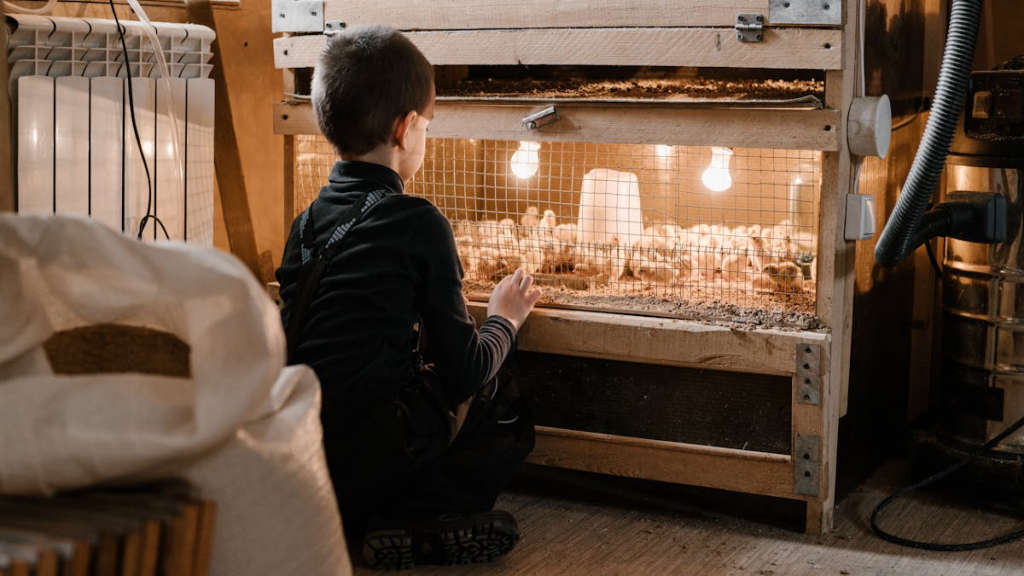As we navigate the challenges of modern agriculture, the concept of sustainability has evolved into a multifaceted approach. Today, farmers and agricultural experts work together to discover various types of farm sustainability that can help balance productivity and environmental health. Innovative practices are not just beneficial; they are essential for creating resilient ecosystems that support both farming communities and the planet.
Main Points
- Understanding the importance of types of farm sustainability in current farming practices.
- Exploring innovative techniques that enhance farm productivity while preserving resources.
- Examining case studies of successful sustainable farms worldwide.

Integrating Technology and Traditional Practices: A Holistic Approach to Sustainable Farming
The landscape of agriculture is ever-evolving, and the integration of technology with traditional practices is at the frontier of this evolution. Embracing a holistic approach to sustainable farming not only enhances productivity but also preserves the ecological balance that is essential for future generations. As we navigate this complexity, it becomes vital to understand how technology can synergistically interact with traditional practices to foster more sustainable farming methods.
The Need for Integration
Today, farmers face a myriad of challenges ranging from climate change to resource depletion. Relying solely on traditional methods may not suffice in addressing these contemporary issues. However, one might wonder, can we really merge the old with the new effectively? This question often leads to confusion. The reality is that integrating technology must complement traditional practices rather than replace them. The synergy created can unlock numerous benefits.
Key Benefits of Integration
- Enhanced Efficiency: By utilizing precision agriculture technologies, farmers can optimize their input usage. For instance, GPS-guided tractors can minimize overlap in fieldwork.
- Data-Driven Decisions: Technology enables farmers to collect and analyze data on crop yield, soil health, and weather patterns. This analytical approach allows farmers to make informed decisions that align with traditional knowledge.
- Resource Conservation: The combination of advanced irrigation systems with traditional water conservation techniques can significantly reduce water usage in farming.
- Community Engagement: Utilizing social media and local online platforms helps farmers share practices and experiences, fostering a communal approach to sustainability.
- Resilience in Adverse Conditions: Combining traditional drought-resistant crops with modern genetic insights can create varieties that withstand climate variability.
Challenges and Considerations
While the benefits are compelling, challenges do exist. Some farmers may resist adopting new technologies due to fear of the unknown or a lack of understanding. This hesitation raises a crucial question: how do we encourage a seamless transition? Education and hands-on training can mitigate these concerns, guiding farmers to appreciate the potential of modern advancements while respecting their time-honored methodologies.
Moreover, as technology evolves, so too must our understanding of sustainable practices. A balance must be struck between leveraging high-tech solutions and maintaining the cultural significance of traditional farming methods. Thus, fostering a dialogue between generations of farmers can lead to the cultivation of a more sustainable and resilient agricultural landscape.
Conclusion
In conclusion, the integration of technology and traditional practices represents a promising pathway to achieving sustainable farming goals. While navigating this journey may present challenges, the potential rewards speak volumes. It is crucial to engage with farmers, providing them with the tools and knowledge necessary for success. By harmonizing the innovative with the traditional, we not only enhance productivity but also safeguard the environment for years to come. As we look forward, let us embrace this holistic approach with an open mind, ready to sow the seeds of sustainable agriculture.

The Role of Regenerative Agriculture in Enhancing Soil Health and Biodiversity
Regenerative agriculture has emerged as a pivotal approach to tackling some of the most pressing challenges in modern farming. This method not only aims to sustain agricultural productivity but also focuses on improving soil health and fostering biodiversity. By implementing practices that work in harmony with nature, regenerative agriculture provides a pathway to restore ecosystems and enhance the resilience of agricultural landscapes.
Understanding Soil Health
At its core, soil health is about the capacity of soil to function as a living ecosystem capable of supporting plant life, regulating water, and cycling nutrients. Healthy soil is rich in organic matter, teeming with microorganisms, and capable of retaining moisture. In regenerative agriculture, practices such as cover cropping, crop rotation, and minimal tillage play a crucial role in enhancing soil health. These techniques not only prevent erosion but also promote the regeneration of soil organic matter. However, the benefits extend beyond just plant growth; healthy soil acts as a carbon sink, mitigating climate change by sequestering carbon dioxide.
The Importance of Biodiversity
Biodiversity is essential for maintaining the balance of ecosystems. In regenerative agriculture, increasing biodiversity is not merely an objective; it is a necessary strategy. By fostering a diverse range of plants and animals, regenerative methods create resilient ecosystems capable of withstanding stressors such as pests, diseases, and climate variations. Diverse cropping systems can lead to improved pollination, increased pest control, and enhanced nutrient cycling. Interestingly, it’s not just the variety of crops that matters; the presence of beneficial insects and soil organisms plays a critical role as well. Thus, regenerative agriculture not only enriches the soil but also creates a habitat for diverse wildlife.
Challenges and Opportunities
Despite the significant advantages of regenerative agriculture in promoting biodiversity and enhancing soil health, several challenges persist. Transitioning from conventional to regenerative practices requires education, significant labor investment, and often a shift in mindset for many farmers. Moreover, market systems sometimes favor monoculture, making it difficult for diverse systems to gain traction. Yet, the opportunity lies in the growing recognition of these practices. As consumers become more aware of the importance of sustainability, the demand for products from regenerative farms is on the rise. This trend not only incentivizes farmers to adopt regenerative practices but also fosters a culture of sustainability in agriculture.
The Future of Agriculture
Ultimately, the future of agriculture may well hinge on embracing regenerative principles. By prioritizing soil health and biodiversity, farmers can build more resilient systems capable of producing food in harmony with nature. The challenge lies in educating a new generation of farmers and consumers about the importance of these practices. As we move forward, it becomes vital to recognize that every small change in our agricultural practices can lead to significant impacts on the health of our planet.
| Key Aspects | Benefits |
|---|---|
| Cover Cropping | Reduces erosion, enhances soil structure |
| Crop Rotation | Increases nutrient diversity, disrupts pest cycles |
| Minimal Tillage | Preserves soil structure, enhances microbe activity |
In conclusion, regenerative agriculture stands as a promising solution for enhancing soil health and fostering biodiversity. It is a holistic approach that not only benefits our farms but also contributes to the larger ecosystem. By embracing these principles today, we lay the groundwork for a sustainable and fruitful agricultural future.

Conclusion
Sustainability in farming is not just a trend; it’s a necessity. Different types of farm sustainability can guide farmers toward more responsible practices that protect our planet for future generations. By implementing eco-friendly methods, we can maintain healthy ecosystems and ensure the longevity of our food sources. Embracing these sustainable approaches not only benefits the environment but also supports the livelihoods of those who work the land. As we look to the future, it’s clear that prioritizing sustainability is essential for creating a harmonious balance between agriculture and nature.
Frequently Asked Questions
What are the main types of farm sustainability?
The main types of farm sustainability include environmental sustainability, economic sustainability, and social sustainability. Each of these types aims to maintain or improve the ecological health, financial viability, and social equity of farming practices.
How can farmers achieve environmental sustainability?
Farmers can achieve environmental sustainability by implementing practices such as crop rotation, organic farming, integrated pest management, and reducing chemical inputs. These practices help preserve soil health, conserve water, and protect biodiversity.
Why is social sustainability important in farming?
Social sustainability is important in farming because it focuses on the wellbeing of farm workers and rural communities. Ensuring fair labor practices, supporting local economies, and promoting access to education and healthcare contribute to a more equitable and sustainable agricultural system.